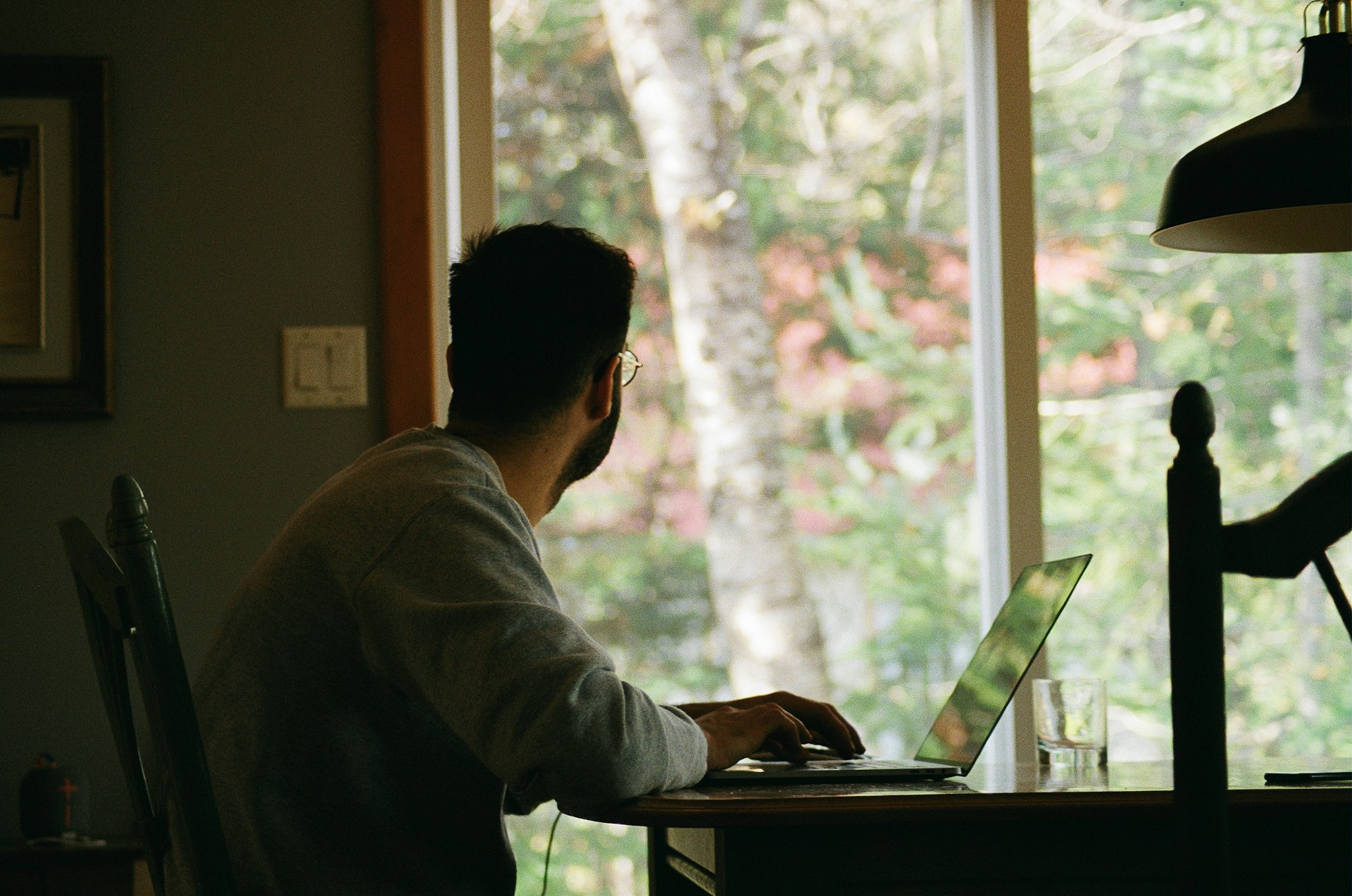By Ashley Barnes, M.S.
Stressors and Stress
Stressors are what activate the stress response in the body and stress is the neurological and physiological shift that happens when you encounter one of these stressors. For so many of us, work-related stressors activate our stress response. Whether it’s searching for a job in our current economic conditions, experiencing burnout from working long hours without adequate rest, or working a high pressure job, work stress can permeate our daily lives – in and outside of work.
Emily Nagoski PhD’s book, “Burnout: The Secret to Unlocking the Stress Cycle,” describes stress as “an evolutionarily adaptive response that helps us cope with things like, say, being chased by a lion or charged by a hippo. When your brain notices the lion (or hippo), it activates a generic ‘stress response,’ a cascade of neurological and hormonal activity that initiates physiological changes to help you survive…this complex, multisystem response has one primary goal: to move oxygen and fuel into your muscles, in anticipation of the need to escape” (2020).
The following are 8 healthy mental health habits that can be used to complete this stress cycle and combat the ramifications of burnout:
Exercise
Evolutionarily and physiologically, what signals to our body that we have escaped the threat is using this stress fuel that our bodies create – this can be running away from the threat, swimming away from the threat, etc. In the modern world, our bodies perceive threats to our well-being as filing taxes or interpersonal conflict, for example. Nagoski points out that “your body has no idea what ‘filing your taxes’ or ‘resolving an interpersonal conflict through rational problem-solving’ means. It knows, though, what jumping up and down means. Speak its language—and its language is body language” (2020). Physical activity is the best way to complete the stress cycle.
We know that exercise is recommended for improving our physical health but has also been researched and observed to have positive benefits on mental health. It increases endorphins in our bodies, which help us effectively cope with stress and pain. Further, when we exercise, studies show that this can in turn positively impact our sleep cycles, enhancing our quality of sleep (Korb, 2015).
Exercise can look different for each of us depending on our ability status and the time we are allotted with our various responsibilities, but finding ways to integrate exercise into our schedules is recommended. Here are various exercise ideas:
- Practice yoga
- Take a walk through your neighborhood
- Go on a run
- Attend a class (pilates, cycling, zumba, dance, etc.)
- Play your favorite sport (tennis, basketball, pickleball, etc.)
- Go on a scenic hike, solo or with a friend
- Dance to your favorite songs
Socialize
Casual and friendly social interaction signals to our bodies that the world is a safe place, essentially signaling to our physiological processes that we can stop mobilizing to escape a perceived threat. This can look like complimenting someone at work or striking up friendly conversation with someone in line at a coffee shop.
Laughing with others is another way to complete the stress cycle, as well as deep connection with a loving presence. This can look like talking to a trusted and beloved person who understands you, or a comforting hug.
Further, connecting with our support system can enhance our mental health and well-being. Connecting with friends, family, and those in the community foster meaningful human connection and can make us feel good; research indicates that having perceived stronger and meaningful connections with others can help improve our mental health (Korb, 2015).
Creative Expression
Creative expression is yet another (and in my opinion, incredibly therapeutic) way to complete the stress cycle. The arts (sculpture, painting, drawing, music dance, storytelling, theater) create conditions that encourage the expression of big emotions. Visual, literary, and performing arts permit us to move through big emotions in a beautiful way. For example, if you are coping with a loss, you might write a melancholy song to help you process your grief. If you are stressed, you may dance vigorously and with great intensity to process the intensity of the feeling. If you are in love, you may paint a beautiful, romantic picture to capture the emotional experience.
If you don’t consider yourself the “creative type” you can also enjoy art created by others that encapsulates how you’re feeling. This can look like screaming along to angry music if you are feeling angry!
Emotions and feelings cannot be suppressed. Even if we try to suppress them, they will resurface. We must allow ourselves to feel them. To experience them is to allow them to move through us and with this, they are processed in a healthy way.
Self-Compassion
Put simply, “Self-compassion is…the process of turning compassion inward.” (Neff, 2022).
It is especially important to practice self-compassion when we “fail, make mistakes or feel inadequate. We give ourselves support and encouragement rather than being cold and judgmental when challenges and difficulty arise in our lives. Research indicates that self-compassion is one of the most powerful sources of coping and resilience we have available to us, radically improving our mental and physical well-being. It motivates us to make changes and reach our goals not because we’re inadequate, but because we care and want to be happy” (Neff, 2022).
The following are some examples of ways you can practice self-compassion:
- Talk to yourself like you would a cherished, close friend.
- Be patient with yourself.
- Forgive yourself for making a mistake.
- Celebrate your wins.
- Speak to yourself kindly.
- Encourage yourself when you are at a low point.
- Do a random act of kindness (for yourself).
Gratitude
Research also indicates that expressing gratitude can improve our general sense of well-being, especially pertaining to our mood (Emmons & McCullough, 2003). We can practice gratitude through a simple thought journal where we make an intention to note aspects of our life that we are thankful for. We can also express gratitude directly to other people. Gratitude helps us focus on the positive aspects of our lives in a way that makes those positive aspects more salient to us.
Mindfulness
There are many definitions of mindfulness. As it pertains to mental health, mindfulness describes the practice of acknowledging what is happening in the present moment, both outside of yourself (the world around you) and with yourself (your emotions and bodily sensations) without judgment. “Research in mindfulness has identified a wide range of benefits in different areas of psychological health, such as helping to decrease anxiety, depression, rumination, and emotional reactivity. Research has also shown mindfulness helps to increase well-being, positive affect, and concentration” (UCLA Health, 2023).
Here of some ways you can practice mindfulness:
- Stop looking at your phone screen, take a deep breath, and notice what is happening around you
- Attune to your senses: What do you see? What do you hear? What do you smell?
- Practice Meditation
- Do a body scan: What sensations do you notice in your body starting from the top of your head to the tips of your toes?
- Take slow, deep breaths
Sleep
Don’t “sleep” on the benefits of a good night’s sleep. Obtaining an adequate amount of sleep helps us cope with stress better, has a positive effect on memory, and improves mood (Korb, 2015). The Centers for Disease Control and Prevention suggests adults acquire around 7 hours of sleep per night (CDC, 2017). Sleep hygiene is a term we are suggested to get familiar with and describes good sleep habits that can help improve sleep quality.
Take a Mental Health Day
Western culture in America pushes productivity and is basically a burnout factory. If we are burnt out, our mental and physical health suffers. Our quality of work also suffers, so it is a lose-lose for both ourselves and our employer. We have all received the reminder that taking a day to rest when we start to feel physically sick can help us recover faster. The same is true for mental health.
A mental health day is a break from work and other responsibilities so you can recharge and rejuvenate your mind and body. This is your reminder that taking a mental health day is not “lazy” or a form of “unproductive.” Rather, taking a mental health day is a way to honor your needs, take care of your mental health, and ensure that you can be more present when you return to work.
Seek Help
If you have utilized these healthy habits and are still struggling with your mental health due to work stress or burnout, this is an indication that you may need professional support.
Psychiatrists have extensive training in the area of assessment and will be able to best determine if what you are experiencing meets the criteria for a diagnosis like anxiety or depression. Collaboratively, you and your doctor will develop a treatment plan which may involve medication management.
Psychotherapy, also known as “talk therapy,” has also been studied to be extremely effective in the treatment of a variety of mental health challenges like depression, especially when paired with psychotropic medications like antidepressants. Psychotherapy gives us the opportunity to work through our thoughts and feelings in an effective and healthy manner, all while receiving support from our therapists and developing coping strategies.
Ketamine is an effective option for treatment-resistant depression. Ketamine, when administered by a mental health care professional at the clinically appropriate dose, targets neurons in a way that stimulates the activity of neurotransmitters in a way that combats depression symptoms. Emerging research is finding ketamine to be effective in combating other mental health diagnoses like post-traumatic stress disorder (PTSD).
Ketamine-Assisted Psychotherapy (KAP), a combination of psychotherapy and ketamine treatment, is another effective way to combat treatment-resistant depression. In KAP, a therapist guides the patient through the session, engaging the patient in sensitive and attentive psychotherapeutic work to process the experience.
Please contact us at the Mental Health Center for sensitive, attentive mental health care. We look forward to supporting you!
References
Centers for Disease Control and Prevention. (2017). CDC – sleep hygiene tips – sleep and sleep disorders. Centers for Disease Control and Prevention. Retrieved November 19, 2021, from https://www.cdc.gov/sleep/about_sleep/sleep_hygiene.html.
Emmons, R., & McCullough, M. (2003). Counting blessings versus burdens: An experimental investigation of gratitude and subjective well-being in daily life. Journal of personality and social psychology. Retrieved October 28, 2021, from https://pubmed.ncbi.nlm.nih.gov/12585811/.
Harvard Health Publishing. (2022). What causes depression? Harvard Medical School. Retrieved May 23, 2022, from https://www.health.harvard.edu/mind-and-mood/what-causes-depression
Korb, A. (2015). The upward spiral: Using neuroscience to reverse the course of depression, one small change at a time. New Harbinger Publications.
Nagoski, E., & Nagoski, A. (2020). Burnout: The secret to unlocking the stress cycle. Vermilion.
Neff, Kristin (2022). Compassion. Self-Compassion – Dr. Kristin Neff. Retrieved December 15, 2022, from https://self-compassion.org/
UCLA Health System. (2023). https://www.uclahealth.org/programs/marc/about-us/research


